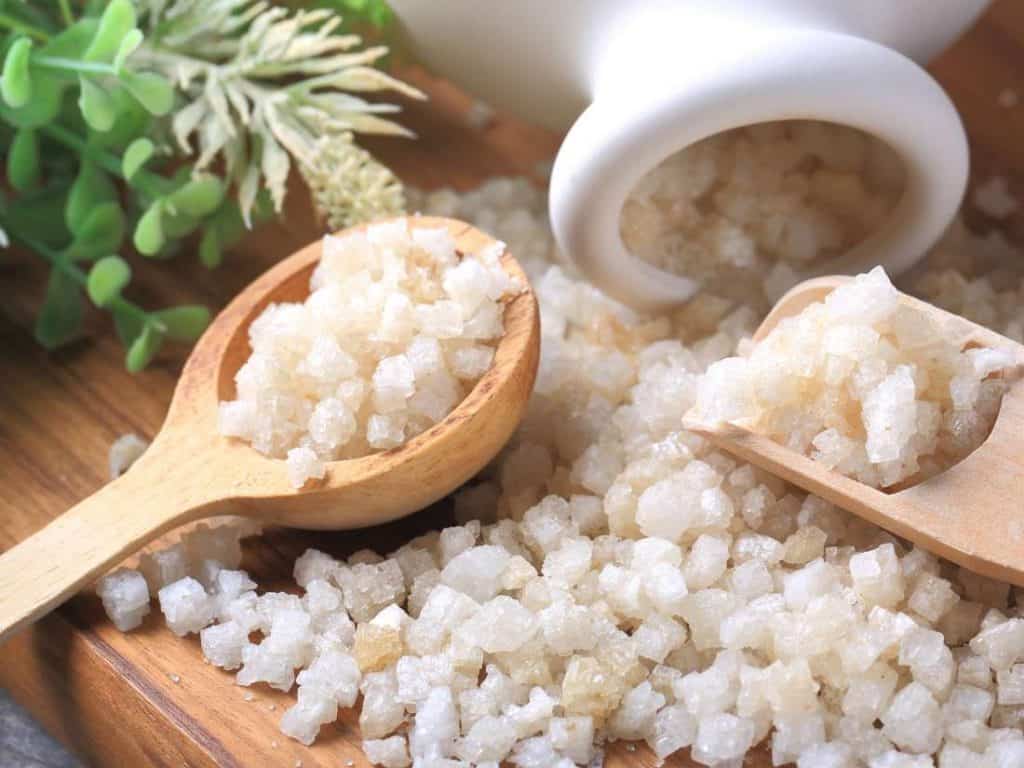Of all the gardening requirements that you possess to maintain a well – kept and bountiful garden, there is one item that must be in your possession all the time. Now look into your gardening commodities and tell us, do you own a carton of Epsom salt? And please sir, do not tell us that you haven’t ever heard of such a thing.
For all you folks out there who haven’t heard of this Epsom salt or who unfortunately, know of its existence but yet, do not use it in any form in your garden, please, we recommend that you do. And why would you do that? That’s the exact question this article is here to answer. But first…
What is Epsom Salt?
Only the best salt in existence, duh! Just kidding, every salt is important in its very own way. But, Epsom Salt for gardeners, in their garden, is like magical fairy dust.
Now, just to clear things up first, this salt is in no way edible and will have negative consequences if consumed by mouth. It is for use in your garden only. Coming to the question pondered, Epsom salt is a compound constituting the mineral, magnesium sulphate.
Magnesium, what gardeners call a “major minor” element is pertinent to plant growth and Epsom salt provides this element. This compound consists of the two major minerals required by plants: magnesium and sulphur, hence, making it a vital gardening compound. And in order to provide these elements to the plants gardeners use this salt however and whenever required.
Say, historically, how did Epsom Salt come into existence?

Let’s delve into a very short story about how Epsom salt was introduced to the world. You see, in 17th century England, there was this town called Epsom (hence, the name Epsom). One fine summer day, a local cowherd named Henry Wicker was taking his cattle for a walk, when he came across a pool of water.
He thought the cattle could quench their thirst by drinking the water from the pool, but to his surprise they refused to do so. It was discovered that the water tasted bitter, and upon evaporation, it yielded a salt, which for the next 350 years was used as a treatment for constipation owing to its laxative nature.
The town became a “spa” to where many people travelled to rid themselves off their ailments. What we now recognize as its laxative effects were discovered then and were put to use by people then. It wasn’t until 1695, that a scientist by the name Nehemiah Grew and his associate, that Epsom salt was given its name after the town that it was discovered in.
Nehemiah wanted to manufacture this salt on a large scale but the sat infused water in the town soon ran out and the town lost its status of a “spa destination”. Today, Epsom salt is largely manufactured by PQ Corporation and Giles, both domestic producers.
Taking away from its bodily use (such as laxatives and bath salts), Epsom salt was soon recognised to be a treasure to use in the growth of plants. And over time, its many green uses were discovered and are now put to great use by gardeners everywhere.
Why use Epsom Salt at all?
There are a multitude of reasons as to why Epsom salt should find a commonplace use in your garden. To list a few:
- It helps in accelerating plant growth
- It increases flower blooming
- It increases harvest produce
- It deters pests
- It enhances the flavour of fruits and vegetables
- It increases chlorophyll production, making your plants greener
- It makes plants grow bushier
- It assists in the germination of seeds
- It provides the plants with vital nutrients as a supplement to your regular fertilizer
And not to mention, Epsom salt will ensure the growth of plants rich in minerals and keep their health intact. All these uses are only a few to begin with.
How can Epsom Salt be used effectively?
There are certain ways and mixtures in which Epsom salt can be used that can be mastered by anyone interested in its workings. Since Epsom salt is magnesium mineral, it works the best for tomatoes, peppers and roses, which are plants that require high magnesium. And these plants have their way of needs.
#1 – Tomatoes

Tomato plants have fruits that weigh more than the plant itself. This means that due to the size of the tomato and for its production, all of the magnesium in the plant is diverted to the fruit so that it can grow healthily.
And this is why it has a higher chance of magnesium deficiency, which is why it requires higher magnesium intakes. In order to provide the plant with higher rates of magnesium, make use of a foliar spray added with Epsom salt on your tomato plants.
Be sure to not add the salt directly to the soil but instead only spray on the plant. Why not directly add the salt to the soil? Because with the foliar spray, there will be little competition among plants for absorption as would be the case if the salt were to be directly added to the soil. So instead, when we give each plant its own share of the salt solution, there will be no competition and all plants will receive their share of magnesium easily.
Along with this, when sprayed onto the plant instead of directly adding to the soil, the magnesium mineral will seep into the plants at a faster rate. In order to prepare the solution, concoct 2 tablespoons of Epsom salt by mixing it with 1 gallon of water. Make sure to use this solution to water the plant regularly once every two weeks.
#2 – Peppers
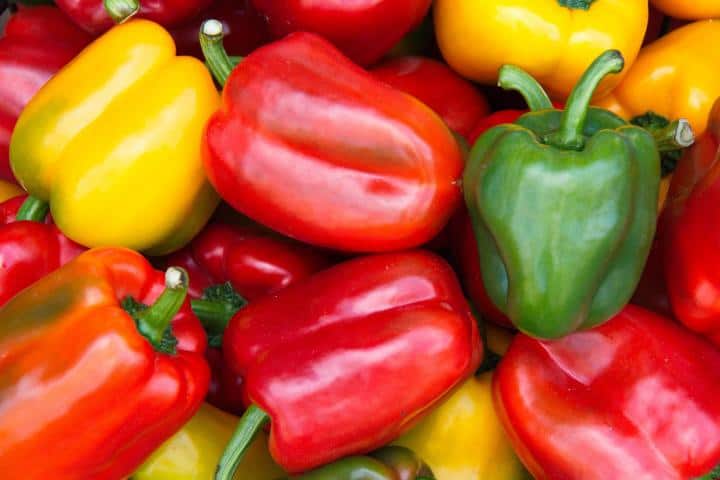
Pepper plants have a higher yield outcome in comparison to other average fruit yielding plants. This means that pepper plants require more nutrients to grow and yield peppers.
But because the yield is naturally larger, the plants keep quickly running out of its major element i.e. magnesium in order to produce peppers. And this is why the plant runs out of magnesium quicker than other plants.
So the plants need to be provided with magnesium as quickly and as much it is given. In order for there to be healthier fruits and to be able achieve the best and most yield, Epsom salt can be utilized. To use the salt for the enhancement of the plant sprinkle 1 tablespoon of Epsom salt for every 1 foot of length around the plant.
Here, we’re not adding the salt to the plant in the form of a water solution, but instead we’re adding it into the soil which is a way of achieving more optimal results. Sprinkle the salt around the plant regularly once every week.
This will make sure that the pepper plants are able to acquire as much magnesium as is required to produce its humongous yield that will be well – nourished and healthy. Using Epsom salt to grow peppers will not only increase production, but it will also ensure bigger, tastier fruits that are rich in nutrients. It also avoids slow growth.
#3 – Roses

Beautiful Flowers require beautiful care. Rose gardeners commonly use Epsom salt to grow lush, green foliage as a support to vibrant, colourful flower blooms.
Roses, in specific, need high amounts of magnesium to prosper. Epsom salt ensures enhanced blooming and deepens the colour of the flower and makes the flower vibrant and strong. Epsom salt helps in the greater production of chlorophyll levels in the plant causing more production of food which in turn strengthens the cell walls of the flowers, and this is how the colour of the flower is brighter and deeper.
It is recommended that you begin using Epsom salt on your rose plants from the initial stages in small doses. This will help result in increased bloom quantity and size. Keep applying the salt to all new growth every time there is one. The salt can be added to the soil. For this sprinkle about 1 cup of salt for about 100 square feet of area around the plants. Mix it well into the soil and do so before you begin planting.
Before proceeding to the stage of planting roses in a bush, you can take a cup of lukewarm water added with half a cup of Epsom salt and soak the roots of the roses in the mixture. This will help strengthen the roots and will act like a fertilizer to the plant. And before you plant the roses, make sure to fill the hole with Epsom salt and to cover the salt to avoid direct contact and then plant the flowers. Epsom salt proves to be a great fertilizer for your rose plants.
Once your roses are well planted, you can regularly sprinkle Epsom salt in the soil around the plant to ensure growth. You can also use the foliar spray as an applicator to your rose plants.
Add a tablespoon of Epsom salt to a gallon of water and sprinkle this mixture onto the rose bushes during spring and when the plants are flowering. This provides good fertility to the plants and their flowers. Because Epsom salt is a pH neutral you wouldn’t have to worry about overusing it on the plants.
Tomatoes, Peppers and Roses, got it. But is that all that Epsom salt can be used for?
Fortunately, no. Epsom salt has many more uses in the garden than only catering to the three mentioned plants. These uses bring out the versatility of the salt. For many other plants that do not require as much magnesium, Epsom salt provides other methods of enhancement.
#4 – Nutrient Intake
One of its main uses is to provide the major minor element of essential nutrients to the plants. Epsom salt provides the plants with the very much required magnesium. This ensures that the plants are not deficient in any element are equally provided with all elements necessary.
If you were to use Epsom salt to increase your plant’s nutrient intake, there would be much healthier and greener results in your plants. In order to increase plant nutrient intake sprinkle Epsom salt on the soil surrounding the plant. Do this once every week to ensure better results.
#5 – Transplant Shock
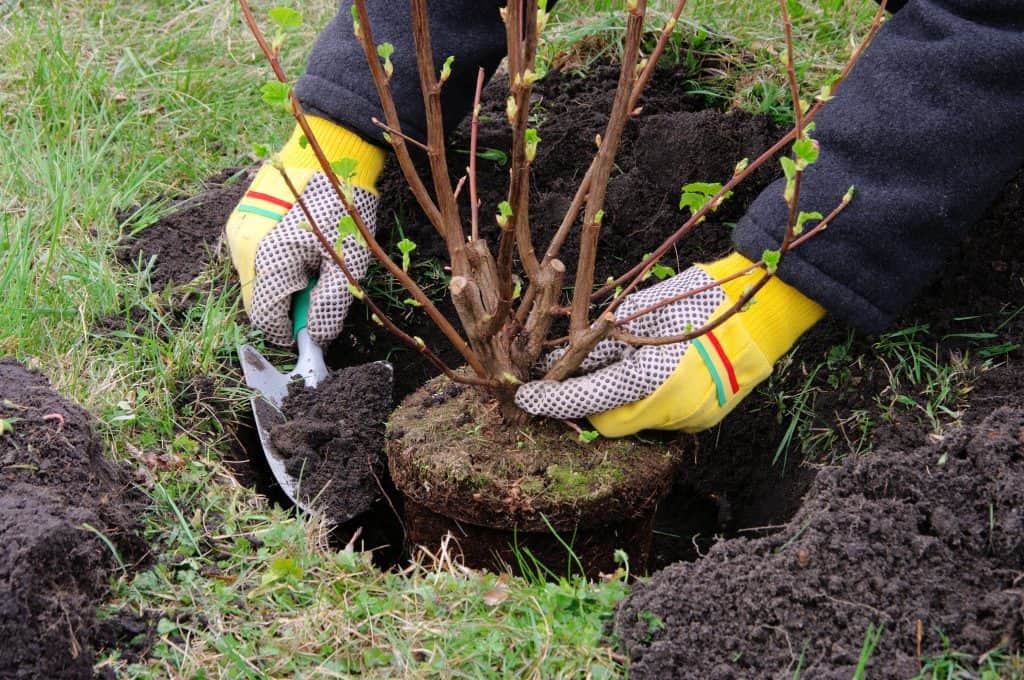
Plants, in their initial stages, experience what is known as transplant shock at the time of transference into the soil. When most plants or seedlings are transferred from the greenhouse or the seed bed into the ground, they are met with transplant shock due to the drastic change of environment around them and as a result, they wilt.
By filling the holes into which the plants are being transferred, with Epsom salt, this shock can be overcome. However, do not forget to cover the salt with soil in order to avoid direct contact with the salt as the concentrated minerals in the salt can be harmful to the plant due to the strong minerals.
#6 – Greening of Plants

Green plants are a sign of health. It is only when the plants acquire their entire required nutrients do they have the capacity to process energy and stay lush green.
This not only signifies health but also optimal yield. Magnesium plays a vital role in the greening of plants and sometimes it so happens that plants lack magnesium mineral which causes the plants to yellow. This can be averted by adding a tablespoon of Epsom salt to your garden plants once every month. This ensures more foliage and healthy green plants.
#7 – Sweetening the Fruit

Epsom salt is known for its use of producing sweeter fruits and tastier vegetables. This can be produced by sprinkling a solution of 1 tablespoon of Epsom salt mixed with 1 gallon of water on fruit plants, bushes, and nut trees will help boost its chlorophyll.
This will increase energy production in the plant which will in turn increase primary sugar production, hence, sweetening the fruit. Epsom salt will not only ensure that your fruits have a great taste but also a great look.
#8 – Tree Stumps
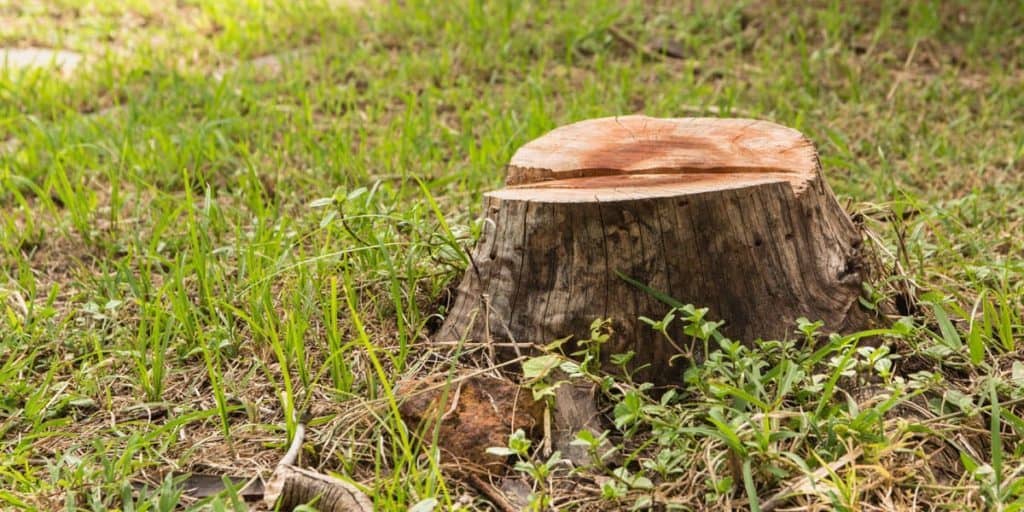
Tree stumps are common phenomena in your yard after you’ve gotten rid of a tree that you do not want anymore. It not only gives your yard an untidy look but also poses a danger of tripping especially for children. But they are not easy to get rid of and are also tiring to get rid of. Trying to cut down the whole stump will not do the job for you. And that’s where Epsom salt comes in.
Epsom salt makes the work easy for you. In order to put the salt to good use, all you have to do is make holes in the tree stump. Make holes on the top of the stump and make similar holes that are angled on the sides of the stump. So you get the idea, they look like little pockets all over the surface of the stump.
Now you fill the holes with Epsom salt up to the brim. And that’s it, you work there is done. All you have to do next is to wait because the salt will decompose the stump and in a few weeks, in the place where there was the tree stump, there won’t be one anymore because you will have gotten rid of it. And in this way, Epsom salt comes in handy for the job of clearing up your garden space.
#9 – Leaf Curling
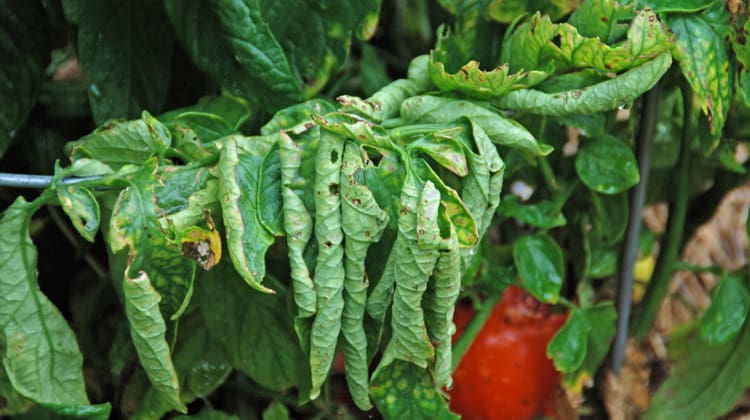
Often, you see curled leaves on plants. This is an obvious sign of nutrient deficiency in the plant. The deficiency can mostly be attributed to a shortage of magnesium in the plant which leaves the leaves curled (pun intended).
However, this can easily be avoided by a simple Epsom salt mixture. Add 2 tablespoons of Epsom salt to 1 gallon of water and apply this mixture regularly to the plants using a foliar spray. In no time, you will see the leaves uncurled and this will mean that their health has been restored.
#10 – Pests

Epsom salt is known to act as a pest control against many known plant pests. It helps keep away critters, snails and other such pests which infiltrate plant space and feed off the plant, leaving them unhealthy. For this, Epsom salt can be used against such creatures.
You simply have to apply the salt to the plant directly without the medium of water or soil. When the pests come in contact with the salt, they get irritated by it because of which they leave, never wanting to come back.
However, be sure to apply them well before your watering intervals because Epsom salt is soluble in water and it will easily dissolve and leave the plant wide open for pests to attack.
#11 – Frizzy Palm Tops

Palm leaves tend to get frizzy due to their sheer size and length. They often dry up or frizz up due to a magnesium mineral deficiency. Epsom salt helps with frizzy palm tree tops and smoothes them out in no time.
Just a smidge of Epsom salt added with water into the soil around the plant will do the trick. The solution will soak itself into the soil and seep into the plant, providing the plant with the nutrients required. You wouldn’t need to do this regularly, once or twice a year would be sufficient and you have neat palm leaves all year round.
It seems too good to be true? Is it completely harmless?
Like everything ever, Epsom salt too has its own cons. However, thankfully, they are way fewer in comparison to its pros and also only conditionally manifest themselves. To see to it that you don’t have a bad run – in with Epsom salt, we shall tell you what can go wrong while trying to use this salt and how you can completely prevent it.
Plants like tomatoes, peppers and roses require loads of Epsom salt to grow in richness and most plants such as beans and leafy vegetables and other plants can thrive in soil containing low magnesium. However, it is not recommended that you just up and use Epsom salt for your soil just so. Getting your soil tested to see whether it is deficient of magnesium or not would be a good way to go.
That way, you can gauge whether your soil needs Epsom salt and to what extent. Sometimes, in order to fulfil your magnesium deficiency in your soil, you may not only need to use Epsom salt but can also use other magnesium compounds to do the job. This depends on what you’re comfortable with and also the kind of deficiency your soil is holding. On review, if you feel like you could opt for other magnesium compounds then go for it. But make sure to consider Epsom salt too.
Epsom salt is also used as a fertilizer. However, it does not fully fertilize your plans and there are other options such as compost that, combined with regular watering, can provide your plants with better micro and macro nutrients that can keep them naturally healthy.
Even though Epsom salt is flawed this way, it does pose a strong competition to mercenary fertilizers because even if you overuse Epsom salt on your plants, it would pose no danger to them unlike commercial fertilizers.
Specific magnesium deficiency is hard to come by in garden plants. For a casual gardener such a problem would be non – existent. So using Epsom salt as a magnesium provider would be a little tricky for your garden plants because they wouldn’t need so much magnesium in the first place considering their small – scaled nature which is why it would be futile to use Epsom salt for such plants.
But then again, because of its nature, Epsom salt would prove to be no danger even if used. Hence, you can still try it out to see if its compatible with your garden, but your plants might be able to go on even without.
Epsom salt is believed to prevent blossom end rot in tomatoes. Few studies suggest, however, that this rot can simply be avoided without the use of Epsom salt. They also suggest that using Epsom salt may potentially be harmful to the plant instead. Which is why, it is recommended that you use it only if it poses to be compatible with your plants. Otherwise, there are many other ways that you could look into.
Keeping all of this in mind, remember that Epsom salt because of its natural nature can pose little to no harm to your plants. And its downsides can easily be prevented, provided that you do adequate research and are familiar with your plants’ needs and requirements. Be sure to not completely rule out Epsom salt because when used right, it really can work miracles in your garden.
You’ve read how Epsom salt is good, how it can be used, you’ve read how it can be bad and you’ve read some more. Let us tell you this, Epsom salt is cheap, it is effective and it is easy to use. Whatever your garden troubles may be, we’re sure you’d be able to solve it with Epsom salt in one way or another which is why we recommend that you try it. See if it’s a fit for your plants and even if it’s not, that’s nothing to worry about. All you have to do is know what your plants need and fulfill them with a little bit of Epsom salt. So go ahead and try out this magic of a salt, ‘cause there’s a high chance it won’t not work out!

